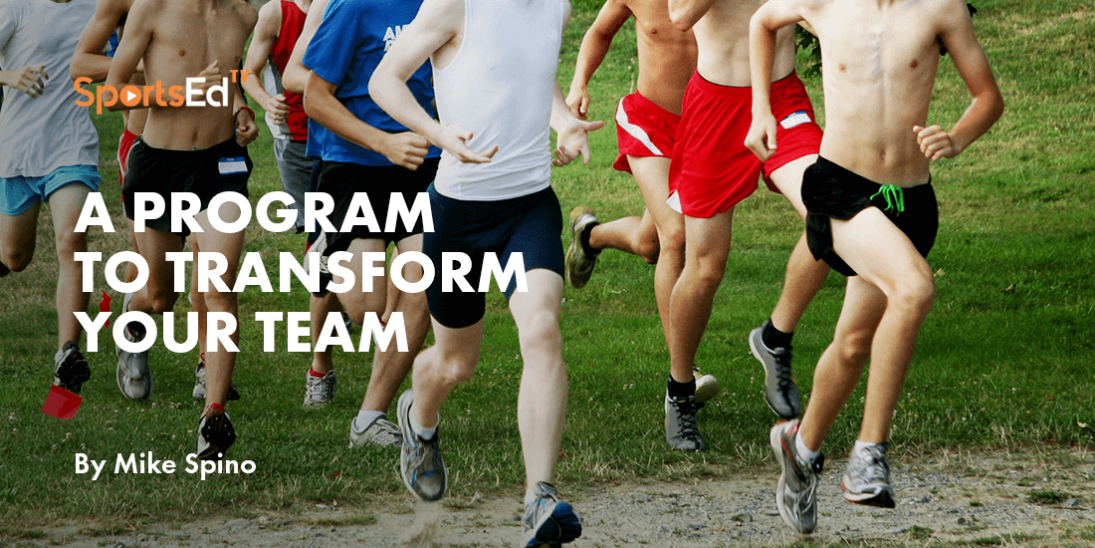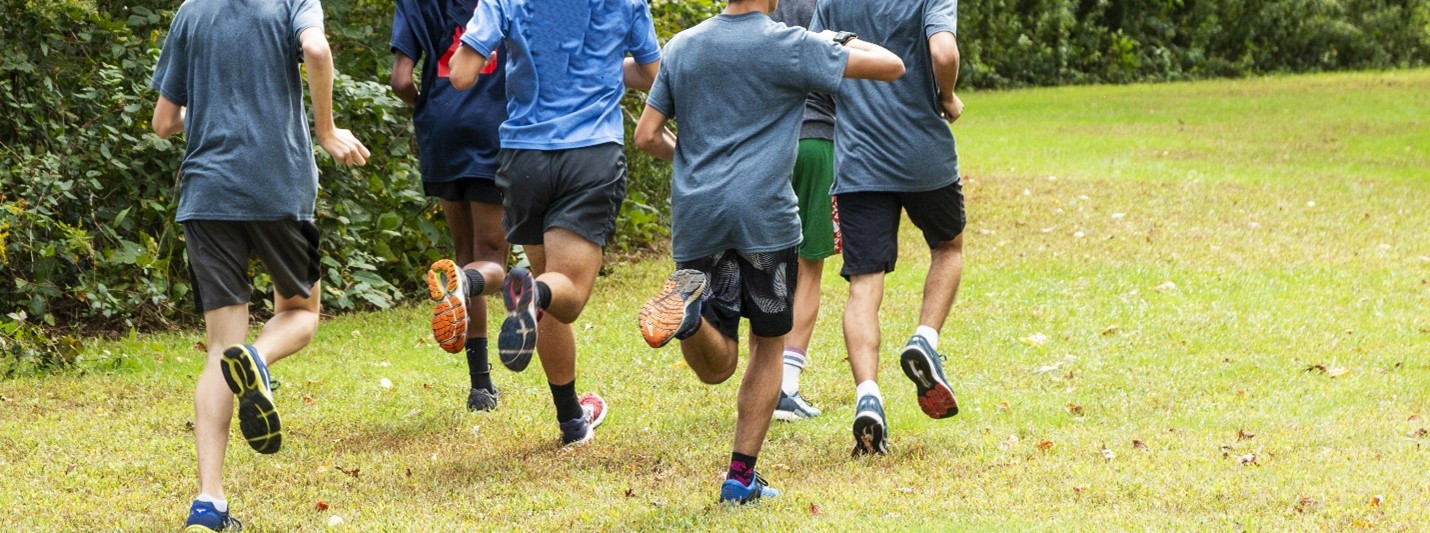Mental Health, Running
Welcome and thanks for visiting...

The Cross-Country Program to Transform Your Team

Concepts for the Beginning of the Cross Country Season

Cross country runners will improve their performance, and coaches can experience the empowerment of their vocation when pinpointed physiological methods and competitive focusing techniques are bonded together in periodically based training schedules. This seasonal training guide contains a definitive coaching approach to the sport of cross-country and includes a mental awareness component that compliments the physical training. In many instances an unforgettable season can occur not because the coach wins every contest, he enters but because the sport of cross-country itself is transformed into a new form of interaction—one in which the composite of the season’s experience is as important as the final team scores.
Our purpose is to promote the cross-country coach to be the teacher, motivator, and central figure for a group of young people attempting to glean the satisfactions and rewards from a challenging sport. This article asks the coach to make a commitment to a new perspective–to focus on the “whole runner’ whether addressing a star performer or any other team member. Both high school and college cross country coaches can benefit from this program that has embedded in its drills and techniques the embodiment of a mind/body training system which delivers measures of success mentally, physically, and even spiritually.
Mapping Out the Season
Cross-country training is a process that starts in the warm summer months and ends in the chill of late autumn. It is above all else an activity of cycles. It is a 13-16 week season during which time the coach and team are beginning with a new base of conditioning and a year ahead full of promise and ambition. This article provides instruction in the workouts, drills, and methods used for each segment of the cross-country season. The suggestions outline an ideal season of training although we will also speak about how to handle injury and setback, so you can learn how to regroup and peak during the championship part of the season. At the end of this article, a means for reviewing how to evaluate the most important elements of the training process is explained.
Planning the Pre-Season

The season’s initial set-up for the high school, college, university, and post-collegiate coach has some dissimilarity. It is recommended that the first pre-season workouts begin on a flat grass field. We hope this minimizes a workout we call “the long sad gray line” which refers to the practice of mostly high school coaches to have their team run for an indiscriminate time along the streets with the lead runner striding smoothly in front and everyone else straggling behind. Rather from the beginning, our method emphasizes selective group training. The coach’s objective is to figure out whom to train with whom, and what workouts, and what sequence of workouts will get the entire team at full throttle when it counts most- during the championship part of the season. The genius of all groupers was Hungarian born Mihlay Igloi who was coach to many star runners who used his method for vast improvement. His mastery could be observed in watching 30 to 40 runners in six or seven groups doing all manner of workouts in different directions and various speeds and finishing the workout together. The successful cross country coach does not have to be this precise, however, understanding the nuances of applying workouts that are physiologically accurate and diverse is at the heart of this program
Segments of the Year Long Program
The flat grass surface should be at least as large as the inside of a football field and if possible accessible to locations for long continuous running. As in all successful periodization training, each segment has a goal, methods, and techniques to achieve a particular result that naturally plateaus before it blends into the next phase of training. The coach teaches new techniques and terms in each phase of the training and the methods are broken down into the physical and mental aspects of the workout. Each new phase of the season will have the group return to the grass field to learn additional techniques that are then integrated into the whole program. The goal is for all aspects of the training and for each runner in the group to reach the zenith of peak performance during the championship phase of the season
Pre-Season Workouts
The initial phase of training is the pre-season that in the U.S. season lasts from July to the end of August. In the pre-season, the goal is to learn the initial techniques that are applied in the interval part of the training plan. Our aim in all phases is to keep all team members injury free as an aerobic base of conditioning is established. The unique training techniques are physical and mental as the team is training physically but also learning how to utilize lung and mental capacities to their maximum potential.
Gaits and Tempos of Running- Initial Drills for Teaching Gaits and Tempos
The pre-season begins with instruction in the application of gaits and tempos methodology. To accomplish this the coach can face the team directly on the grass field and lead or have a team member demonstrate the forms and speeds of running used in our interval training. We all know that effective training takes a sensibility of pace and an understanding of the best forms of running movement to achieve physiological efficiency. Using perhaps a straightaway of 100 meters, the coach explains that a gait is the form of movement during the run and that the tempo is the velocity at which you move. As the coach gives these gaits and tempos names, he is developing a language to communicate his training instructions and a means to carry out his training instructions. Igloi’s terminology works well in this regard as fresh swing tempo is assuming a gait and velocity to go up to about 60% effort. Good swing tempo approaches speeds from 60 to 80%, and hard swing tempo is between 80-95% effort.
During the entire season each training phase has at least one and usually two days of training on this grass field. The terminology however can be used on all surfaces and workouts during the entire season. One of the main reasons for using the gait and tempo with the whole group initially is to make sure each runner has time to “regroup,” so the workout retains group unity. The stopwatch should be used sparingly at the beginning of the season. When used properly, the stopwatch should determine the level of conditioning rather than be a means of setting up workouts to get in shape. In the pre-season, the team learns mid pace running, so as to maximally utilize the Exercise Heart Range (220-age and 60-85% of the target numbers) and avoid sprinting that places the runners’ physiology over the Anaerobic Threshold where it is shutting down its capacities because of the presence of lactic acid.
The three weeks of pre-season will contain two kinds of workouts- intervals and long continuous runs. Interval workouts have a particular sequence of warm-up, stretching, the body of the workout, and a recovery method.
For the warm-up during pre-season, the coach can instruct with the following information.
- Warm-Up During Pre-Season- After the team jogs together for about 5 minutes; finish the warm-up with a few easy stretches and a technique called the shake-up.
The following stretches are good for starters.
- Fully Body Swing:Feet shoulder width apart, raise your arms and extend to the sides swinging your entire body from right to left.
- Grape Picker: Slowly stretch both hands overhead, then stretch your right hand as high as possible, and repeat on the left side as if you were picking grapes
- Lateral Stretch: Raise right arm straight overhead, palms up as you place your left hand on your left hip. Bend as far as possible to the left while reaching over and down to the left with your right arm. Repeat on the other side.

- Wall Stretch: Leaning on a wall or tree moves your right foot back about two feet and place your heel down, toes straight, lean into the wall bending the left foot forward and allow your right leg to stretch. Do on the other side.
- Skip and Shake-Up: On the grass field take a distance of maybe 60 meters begin by skipping as a child skips, only raising your knees a bit higher. Shake up by letting your muscles hand like a rag doll, and every so often throw your hands over your head and to the sides but stay mainly on your toes to loosen up our body and elevate your heartbeat to get ready for the workout. Up and down the 60 meters about 4 times is usually good to complete the warm-up.
Begin the first workout by teaching the difference between fresh, good and hard swing. Have your team run at the various tempos and they will naturally assume the gait that accomplishes the objective. The coach will do perhaps three or four 100-meter intervals with a rest period between each so the group can regather together after each segment.
Introduction of the breathing drills
Breathing Drills- Our Breath is our Awareness
The breathing techniques are taught on the grass field using the concept of the acceleration point. Usually accomplished just once at the point of acceleration, the technique known as tidal breathing propels the runner into a faster tempo half way into the interval. The coach can explain the following breathing principles to his team while standing in front of them on the grass field.
The coach can tell the team to remember that:
- the exhale is the starting point of all breathing techniques. The sound of the exhale should reverberate like the sound of a hollow log.
- when you use the full capacity of your lungs, your breathing begins in the diaphragm and rises to the top of your chest filling up like a balloon.
- stored breath released properly can help accelerate you forward.
- relaxing your lungs when stationary in between parts of the workout accelerates physical recovery.
This will get you started. Look at spinorunning.com for more suggestions.





